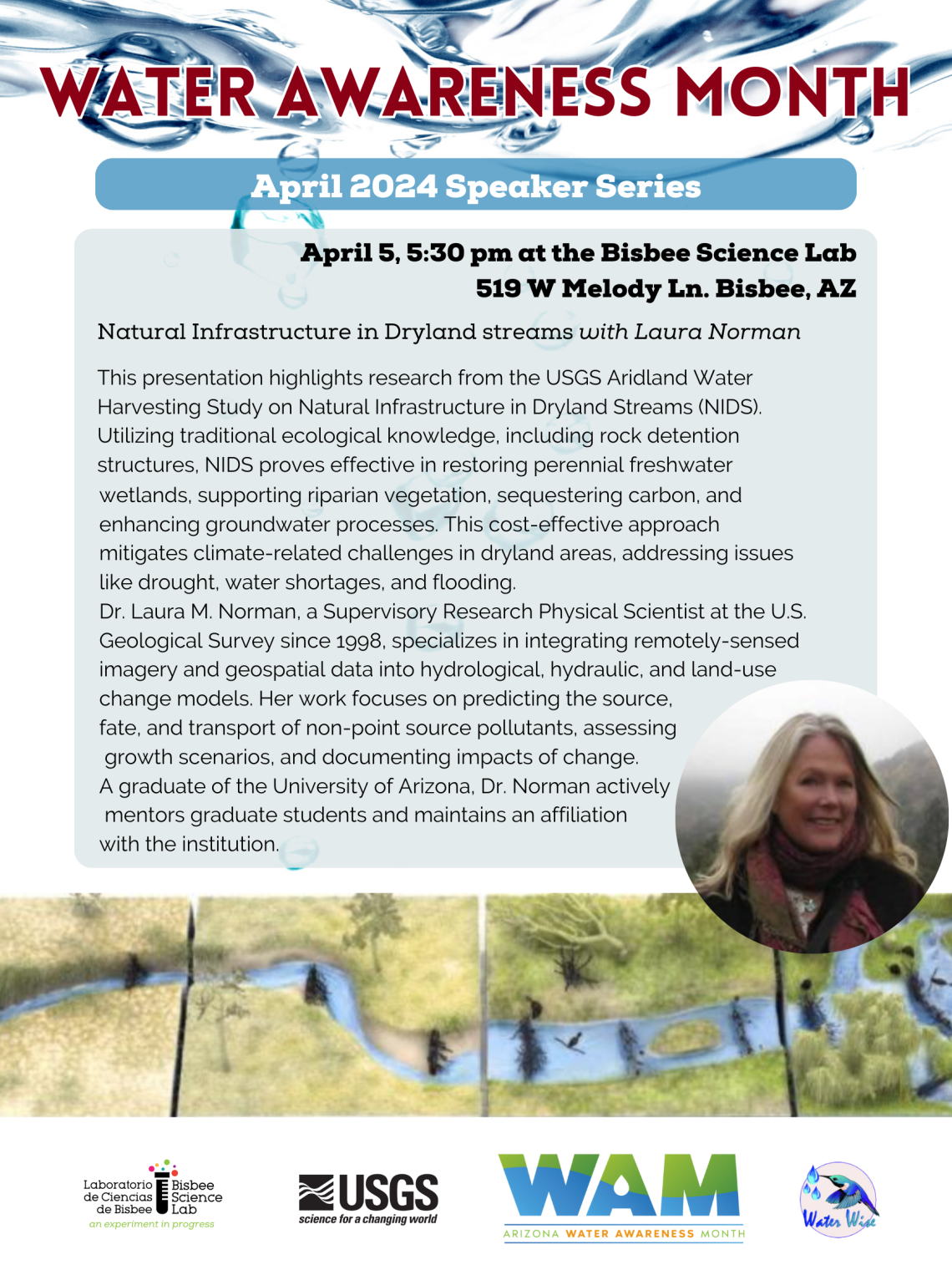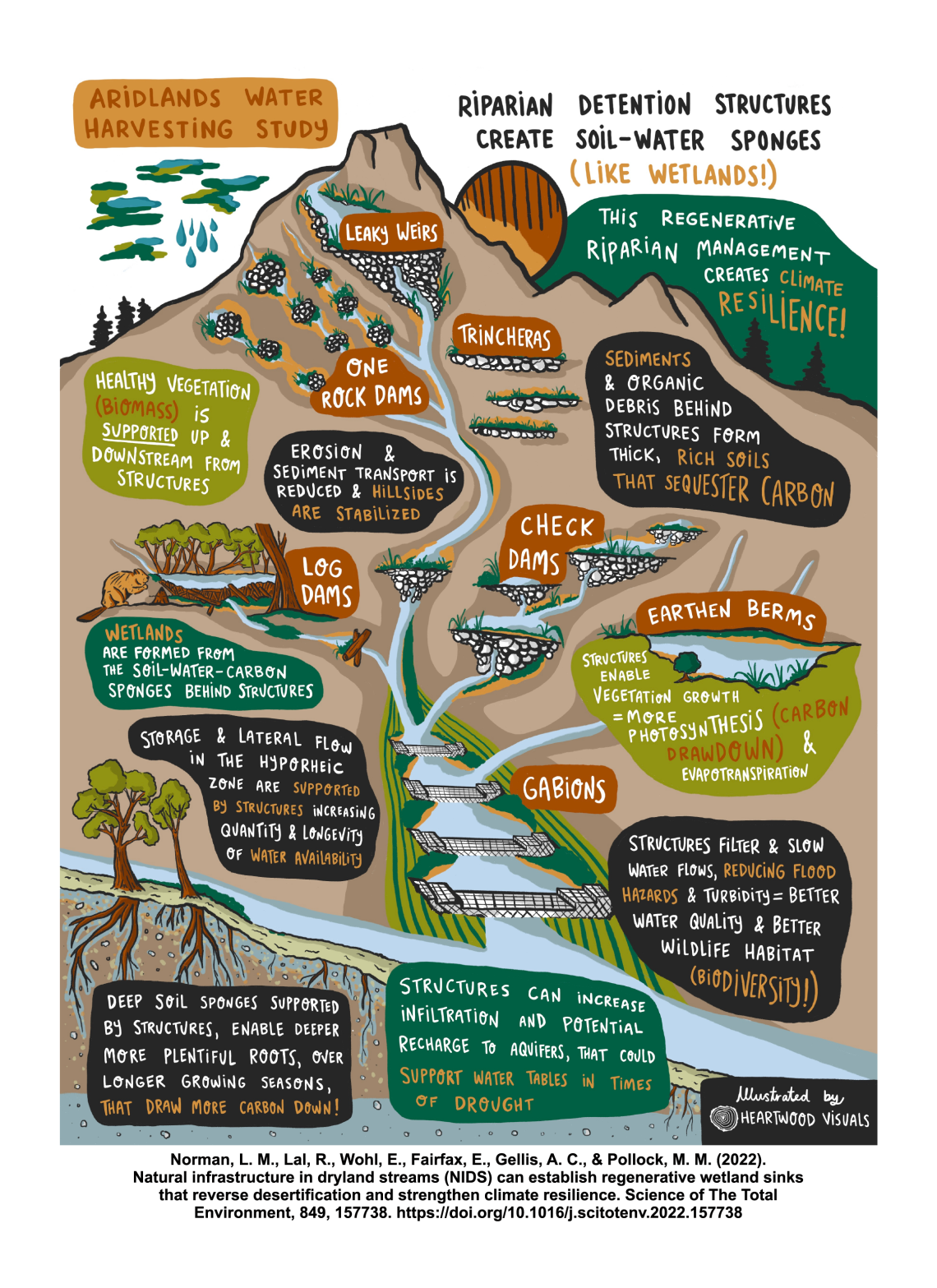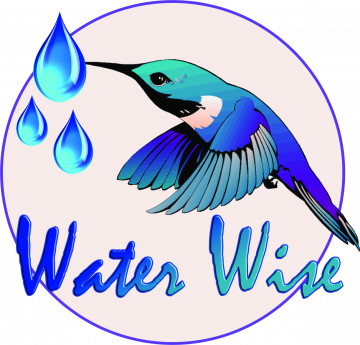with Laura Norman
Image

Image

When
5:30 to 7 p.m., April 5, 2024
Where
TITLE: Natural infrastructure in dryland streams (NIDS) can establish regenerative wetland sinks that reverse desertification and strengthen climate resilience
ABSTRACT: Nature-based solutions are being explored for international water resource management, disaster risk reduction, and climate change adaptation. Efforts to develop more sustainable, regenerative agricultural ecosystems, that maintain cover and promote soil health, can help restore natural processes. People living in dryland climates have historically installed rock detention structures to hold water in place and secure fertile crops. “Natural infrastructure” is one option that offers a cost-effective and flexible approach for disaster-risk and water-resource management. This presentation will introduce research conducted by the USGS Aridland Water Harvesting Study that has proven using natural infrastructure in dryland streams (NIDS), such as rock detention structures, can restore and/or create perennial freshwater wetlands, support riparian vegetation, sequester carbon and improve channel morphology and groundwater processes. This traditional ecological knowledge, using NIDS to slow flows, has been documented for millennia in riparian ecosystems of the southwestern United States and northern Mexico, and is comparable to beaver-engineered systems of North America. NIDS can mitigate climate-related disturbances and stressors, such as drought, water shortages, and flooding.
BIO: Dr. Laura M. Norman is a Supervisory Research Physical Scientist at the U.S. Geological Survey, where she has worked since 1998. Her research combines remotely-sensed imagery and other geospatial data in complex hydrological, hydraulic, and land-use change models to predict the source, fate, and transport of non-point source pollutants, consider potential growth scenarios, and document impacts of change. Dr. Norman is a graduate of the University of Arizona, where she studied watershed management, remote sensing and GIS, worked in the Advanced resource Technology Lab and was a Teacher Assistant/Lab Instructor, and is currently an Affiliate who mentors graduate students.
Contacts
Trevor Lauber


